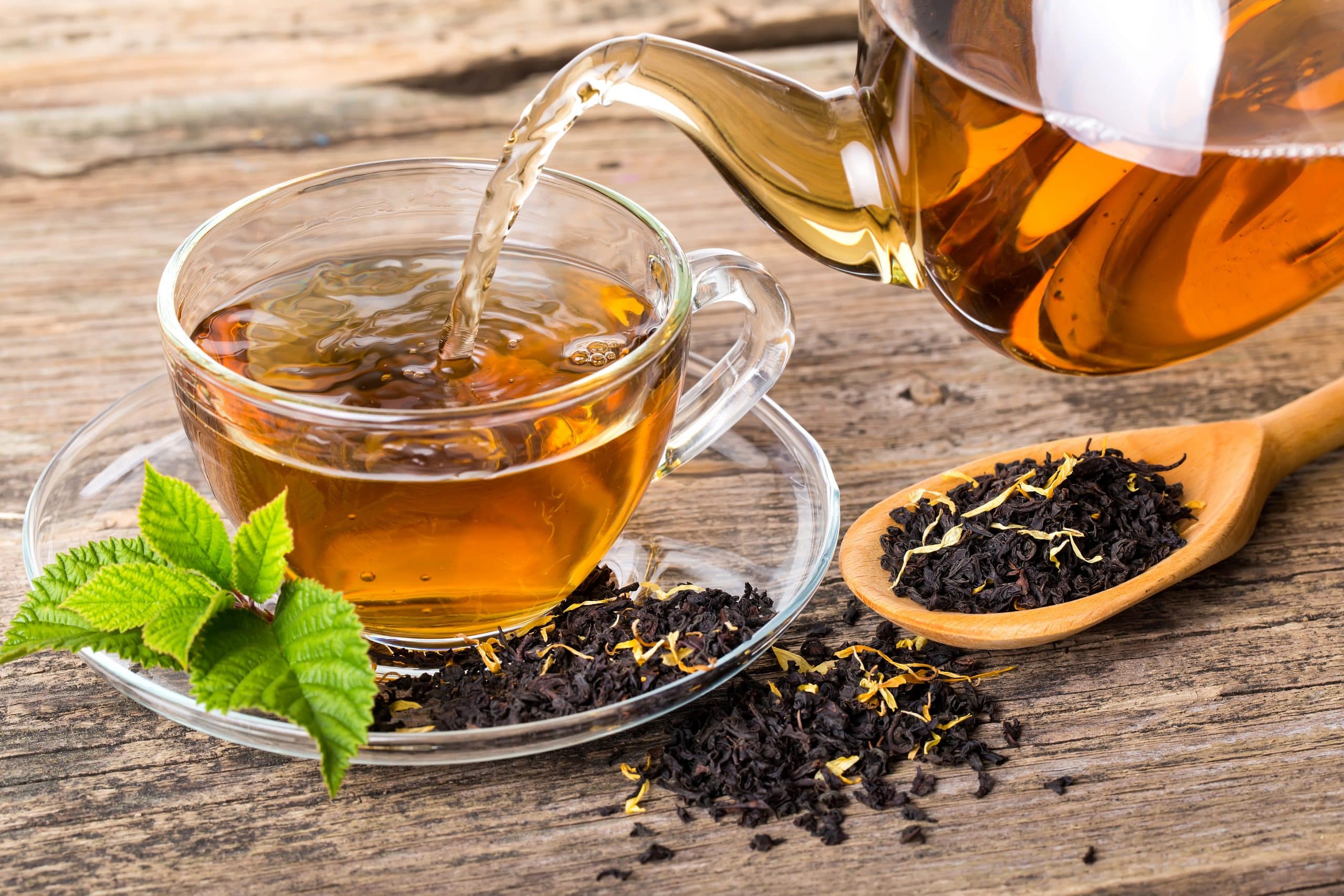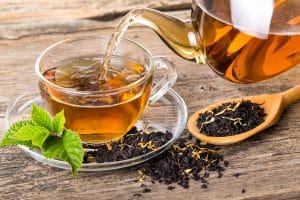The Cancer-Fighting Benefits of Green Tea
Green tea is a drink made from the Camellia sinensis plant. Fresh leaves are cut from this plant and steamed to make the tea. You can drink green tea or take it orally (by mouth) in a pill or tablet as a dietary supplement. You can also use green tea extract on your skin as a cream.
Among their many biological activities, the predominant polyphenols in green tea―EGCG, EGC, ECG, and EC―and the theaflavins and thearubigins in black teas have antioxidant activity. These chemicals, especially EGCG and ECG, have substantial free radical scavenging activity and may protect cells from DNA damage caused by reactive oxygen species (1).
Tea polyphenols have also been shown to inhibit tumor cell proliferation and induce apoptosis in laboratory and animal studies (2, 4).
In other laboratory and animal studies, tea catechins have been shown to have been shown to inhibit angiogenesis and tumor cell invasiveness (3).
In addition, tea polyphenols may protect against damage caused by ultraviolet (UV) B radiation (4, 5), and they may modulate immune system function (6). Furthermore, green teas have been shown to activate detoxification enzymes, such as glutathione S-transferase and quinone reductase, that may help protect against tumor development (6).
However, according to Memorial Sloan Kettering, the following are potential drug interactions, and it is extremely important to understand the reaction with certain cancer-related medications.
A. Adenosine (Antiarrhythmic – It can treat irregular heartbeats) – The caffeine content may inhibit the hemodynamic effects of adenosine
B. Anticoagulants / Antiplatelet (Anticoagulants slow down clotting, thereby reducing fibrin formation and preventing clots from forming and growing. Antiplatelet agents prevent platelets from clumping and also prevent clots from forming and growing) – Theoretically, consumption of large amounts (.5-1 gallon/day) may provide enough vitamin K to antagonize the effects of anticoagulants and antiplatelet agents, though this effect has not been reported in humans
C. Atropine (It can treat heart rhythm problems, stomach or bowel problems, and certain types of poisoning when injected) – The tannin content may reduce the absorption of atropine.
D. Iron supplements (treat and prevent iron deficiency including iron deficiency anemia) – The tannin content in may reduce the bioavailability of iron. Green tea should be taken either 2 hours before or 4 hours following iron administration.
E. Codeine (a narcotic to treat pain and cough) – The tannin content may reduce the absorption of codeine
F. Bortezomib (anti-cancer medication used to treat multiple myeloma and mantle cell lymphoma) – EGCG and other polyphenols can inhibit the therapeutic effect of bortezomib and other boronic acid based proteasome inhibitors
G. Tamoxifen (can treat breast cancer. It may also prevent breast cancer in women at high risk of developing it) – EGCG was shown to increase the oral bioavailability of tamoxifen, increasing the potential for their interactions
H. Verapamil (Antihypertensive drug and Calcium channel blocker
It can treat high blood pressure, severe angina, and arrhythmia) – The bioavailability of verapamil increased significantly in the presence of EGCG, thought to be due to P-glycoprotein inhibition by EGCG
I. Irinotecan (Chemotherapy to treat cancer of the colon or rectum) –
A study found EGCG to inhibit transport of irinotecan and its metabolite SN-38 into biliary elimination, resulting in their prolonged half-life which can increase toxicity
J. Acetaminophen (Analgesic) – It can treat minor aches and pains, and reduces fever) – Green tea was shown to increase acetaminophen-induced hepatotoxicity in mice when administered following acetaminophen
K. Nadolol (Beta blocker) – It can treat high blood pressure, reducing the risk of stroke and heart attack. It can also treat chest pain – angina) – Green tea extract inhibits OATP1A2 transporter and can reduce the absorption and plasma concentration of substrate drugs, like nadolol
L. Palbociclib (sold under the name Ibrance among others, is a medication developed for the treatment of HR-positive and HER2-negative breast cancer) – The bioavailability of Palbociclib decreased following administration of green tea extract in a murine model. Clinical relevance has yet to be determined.
Are you interested in learning more about holistic nutrition and how you can improve your own life as well as that of your clients?

The Natural Nutrition Coach Program is the perfect addition to any Cancer Exercise Specialist or Fitness professional!
References:
1. Henning SM, Niu Y, Lee NH, et al. Bioavailability and antioxidant activity of tea flavanols after consumption of green tea, black tea, or a green tea extract supplement. American Journal of Clinical Nutrition 2004; 80(6):1558–1564. [PubMed Abstract]
2. Seeram NP, Henning SM, Niu Y, et al. Catechin and caffeine content of green tea dietary supplements and correlation with antioxidant capacity. Journal of Agricultural and Food Chemistry 2006; 54(5):1599–1603. [PubMed Abstract]
3. Zaveri NT. Green tea and its polyphenolic catechins: Medicinal uses in cancer and noncancer applications. Life Sciences 2006; 78(18):2073–2080. [PubMed Abstract]
4. Lambert JD, Yang CS. Mechanisms of cancer prevention by tea constituents. Journal of Nutrition 2003; 133(10):3262S–3267S [PubMed Abstract]
5. 78(18):2073–2080. [PubMed Abstract]
Elmets CA, Singh D, Tubesing K, et al. Cutaneous photoprotection from ultraviolet injury by green tea polyphenols. Journal of the American Academy of Dermatology 2001; 44(3):425–432. [PubMed Abstract]
6. Steele VE, Kelloff GJ, Balentine D, et al. Comparative chemopreventive mechanisms of green tea, black tea and selected polyphenol extracts measured by in vitro bioassays. Carcinogenesis 2000; 21(1):63–67. [PubMed Abstract]



